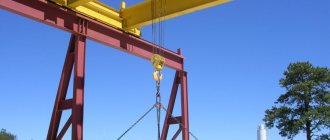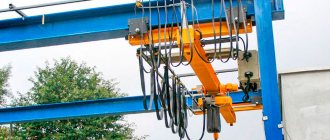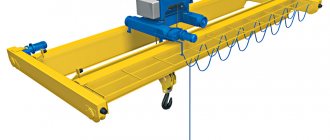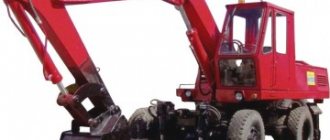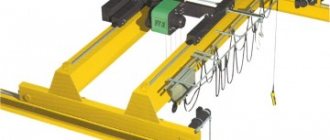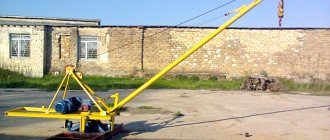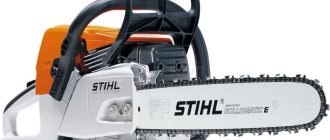The overhead crane consists of a bridge and a load trolley. In turn, the bridge moves on rails, and the cargo trolley moves along the bridge. Overhead cranes can be single-beam or double-beam, have a manual or electric drive, and as for the cabin, it can be either self-controlled or controlled using special devices from afar.
Single-girder and double-girder cranes can be either support or suspended. The support crane moves on special rails, and the suspended crane moves on I-beams.
Types
All crane paths can be divided into the following groups:
- aboveground;
- ground.
Overhead ones are necessary for the operation of overhead cranes, moving crane beams and other special-purpose lifting structures that are operated on external overpasses or in workshops of industrial enterprises. For the installation of such tracks, crane beams are used; they are made of reinforced concrete or steel. During the construction process they are attached to the consoles of the load-bearing supports.
Overground paths can be divided into the following types:
- hanging;
- supporting
The crane is suspended from the first, and in the second case it rests on them. If an enterprise is just starting its work, then in new workshops it can install structures of any type. But when reconstructing old buildings, you need to take into account that not all of them can withstand the load that suspension systems will put on them. In this case, you need to develop a project and make calculations.
An enterprise can choose to install ground tracks. They are laid both outdoors and indoors. They are designed for moving gantry cranes, cantilever lifting mechanisms and semi-gantry devices. Such paths are also intended for moving floor carts.
Strict requirements are imposed on construction.
If an organization has purchased a crane with a small lifting capacity, it is enough to make a sleeper-ballast base for it. For example, this is how tracks are made for a light gantry crane. To move heavy lifting equipment, such as a bridge, a foundation is made under the tracks. Then a reinforced concrete base is laid on it and used when installing the beam.
Device
The smooth operation of the crane depends on how correctly the installation of the crane runways was carried out. The roadbed on which the rails will be laid can only be laid after the completion of excavation work at the construction site.
If you need to make paths in the open air, you first need to lay a water supply system, install a sewer system, and complete the connection to the gas main. It is necessary to pay attention to the fact that storm water must be drained away from the site along which the rails will pass.
After this, you should contact the organization whose employees will prepare the project. Specialists must calculate the length of the crane runways and their width. Then you can start implementing it.
At each stage of construction, the quality of work should be strictly controlled. For example, if construction takes place in winter, ice or snow should remain in the sinuses. It is necessary to ensure that only thawed soil is used. It, like the layer of gravel that is used to form the embankment, must be well compacted. This will allow you to avoid gullies, cracks and subsidence in the future. It must be remembered that such defects can lead to the fall of the crane.
The base for a crane with a lifting capacity of up to 80 tons must be strong. You can pour a soil cushion under it and make a sand mound on top. It is cheaper than crushed stone, but its service life does not exceed 1 year.
Enterprises often use cranes in production with a lifting capacity exceeding 80 tons. Paths under them are constructed in accordance with the following requirements:
- Ballast is made from crushed stone, the size of the fractions is 2-7 cm.
- Sleepers are laid on a ballast layer. The distance between them should be 25-45 cm.
Pine is used to make sleepers. This is a durable material, but all products must be additionally processed. They are sanded and coated with an antiseptic. It is not wooden sleepers that are laid under heavy-duty cranes, but reinforced concrete sleepers. In order to place them on the pillow, they are taken with pincers or moved with cable loops.
When laying rails, you need to monitor the distance between them. It should be the same. A tolerance is allowed in one direction or the other, but not more than 5 mm. The guides are laid in such a way that they run parallel to the central axis of the tracks. First, the first thread of rails is sewn to the sleepers, after which they move on to the second. Installation is carried out according to templates.
It is necessary to ensure that the rails are laid strictly parallel to each other, because deviations will cause overload of the mechanism that is responsible for the movement of the crane. The chassis will wear out faster and the crane will require repairs. If there is severe wear, an accident may occur, and then the lifting mechanism may completely fail.
When performing installation, you must ensure that the rails do not bend like a snake. This arrangement leads to the occurrence of pitching when the crane moves. When hammering in the crutches, you need to pay attention to the fact that they not only hold the rails in place, but also press them to the base.
Under heavy loads and lateral movement, sleepers may crack. To prevent this from happening, you should not drive the crutches in one straight line. To join the rails, pads are used; they are tightened with bolts.
When installing tracks, you need to pay attention to horizontality; it is checked with a level. If it is not there, the device can be replaced with a level. When the work is completed, the tracks need to be run in. This is done by moving tower cranes, rolling them back and forth along the tracks. After the running-in is completed, the sagging sleepers are tamped down.
After completion of the work, stops are installed at the ends of the tracks. They are needed to limit the movement of the crane. When moving, he must stop no closer than 1 meter from the dead end.
Structural elements of the crane runway
Any crane runway is divided into main and auxiliary units. The main ones include crane rails and beams. Auxiliary components include: end stops, buffers, rail pad, fasteners.
The design and composition of these products determines its load-carrying capacity. The composition of the rail pad, the brand of rails and the methods of their fastening depend on this indicator.
Rail bed
This part of the crane runway determines the direction, range and speed of movement of the entire device. The rail track is laid on a pre-prepared substrate. Before starting its installation, all necessary excavation work, planned communications, and the creation of storm drains must be completed. Particular attention should be paid to the quality of the backfilled soil. The overhead crane path is covered only with dry soil of equal density. It is most advisable to make the rail surface from crushed granite stone.
The rails themselves are laid on sleepers, to which they are attached with crutches. Depending on the load capacity, sleepers made of wood or concrete can be used in accordance with established standards.
Up to 10 tons, it is permissible to install rails of grades P18 or P24. Up to 30 tons inclusive, P38 grade rails are recommended. For more powerful bridge systems, P50 or P65 rails are required, installed on the railway track.
Steel vertical crutches
Crutches of the K 130 brand are used as fastenings for crane tracks. They are subject to less stringent requirements for speed loads. They are necessary to solve the following tasks:
- ensure reliable fastening of rails to sleepers;
- promote uniform load distribution during movement and stopping of the bridge lifting mechanism.
Crutches are made of durable steel that is resistant to corrosion.
Thrust guide blocks
These elements are manufactured in the following types:
- driving (transmit torque between shafts);
- slaves (change the nature of raising/lowering by adjusting the vector of the chains).
They are divided into mobile and static. The former increase the speed of movement of the cargo trolley, the latter are able to rotate the axis of movement, from horizontal to vertical or vice versa. The main characteristic is the ratio of the number of branches to the number of ropes going to the drum.
Installation
If you need to install crane tracks outdoors, you should start by contacting an organization that has a license issued by Rostekhnadzor. By going to the federal service portal, you can check whether the company has permission.
First, specialists develop an installation diagram, after which they begin work on the site. The fertile layer of soil is removed from it, reaching the clay layer. After this, drainage is done and the pillow is poured. A layer of crushed stone is poured on top. The installation technology must be strictly followed, then the tracks under the crane will last a long time.
It is important to correctly calculate the foundation for the crane. When performing work, you need to focus on the GOST standard. When creating suspended tracks, it is important to take into account the dimensions of the beam on which the rail will be fixed. They depend on what loads need to be carried. The most commonly used are metal I-beams. The width of their shelves should be at least 20 cm, the height of the beams should be 60 cm or more.
When developing a project, you need to focus on what technical characteristics the lifting machines have. Enterprises can use narrow-gauge rails, for example R-24, as well as special products designed to move crane mechanisms. This is a model of railway rails KR-70.
If an organization has purchased a crane with a small lifting capacity, then the rails can be made from rolled metal. For this, products with a square section of 5×5 cm or 6×6 cm are used.
The crane rails must be fastened to the crane beams correctly. Square rails are welded and fixed to the crane beam. If R-24 rails are purchased, they can also be welded, but fasteners must be used for this. K-70 can only be mounted using bolted connections. This method will require large financial costs, but the long service life of the tracks is guaranteed.
When carrying out installation work, it is necessary to focus on GOST 4121-96. The standards R 53866-2010 should be taken into account. These documents list the basic requirements for rails.
Mounting features
First, let's mention the types of overhead cranes:
- Magnetic.
- Grab.
- Hook.
- Installations equipped with an electric lifting magnet.
Each such option determines the type of cargo it needs to grip. They also produce equipment equipped with special devices (paws, pliers).
All units have suspension - flexible or rigid. The first looks like ropes, but the second is mounted on cranes serving metallurgical industry enterprises. The main working body of a metallurgical crane is connected by a shaft to the loaded cart, so it moves vertically, for which special columns are installed.
Single girder cranes have an I-beam. It is mounted on crossbars in the form of beams equipped with running wheels. When a crane has two beams, they are rigidly attached to a common frame, only the load trolley moves on rails.
If significant loads are expected, the crane bridge is mounted on lattice or box trusses. To move the overhead crane, electric motors are used, which are mounted in the front gallery of the structure. They are controlled using a separate or central drive.
Having become familiar with the traditional options for bridge structures, special-purpose structures should be mentioned separately. If the installation is used in a metallurgical workshop, casting steel or pouring cast iron, it is called a foundry.
Those devices that operate in heating wells are called tick-type devices. Almost any unit is equipped with an inspection platform, from which it is convenient to monitor the operation of electrical equipment and all other mechanisms, and film the technological process.
Service
After several years of operation, the characteristics of the tracks may deviate from the norm. It must be taken into account that defects affect the performance of the crane, because they increase the wear of elements. As a result, there is a possibility of an accident.
In order to prevent a negative development of the situation, maintenance is performed. Specialists check the quality of bolted connections, paying special attention to the condition of the dead-end stops. During the work, bolted connections are checked.
The rails are inspected. Their deviation should not exceed that specified in the operating documents. Once the inspection is complete, technicians include maintenance recommendations in the report.
Repair
Repair work is carried out when rails are damaged or worn out. Problems can be detected by conducting a comprehensive examination. If necessary, workers can straighten the crane tracks; it is carried out in height, as well as along the axes.
Specialists replace parts that have suffered the most wear and adjust joints. If necessary, the roadbed is restored, electrical equipment is replaced, and crane tracks are leveled.
If the electrics fail, employees of an organization licensed by Rostechnadzor will ground the crane structures.
The scope of work can be expanded, because after diagnostics it may turn out that the rails are not within tolerance. In this case, they need to be replaced. First, a new project is developed, and then a procedure begins that is similar to the initial installation. Problems can be identified by photographing crane tracks.
Properly made rails will last at least 25 years, but in some cases earlier dismantling is possible due to force majeure situations. For example, this can happen when an embankment is washed out due to a flood. Rails can be deformed as a result of a falling crane or load. Repair of crane tracks must be carried out by specialists.
Practical lesson No. 3. Construction site fencing and marking of hazardous areas
Auditory lessons
- 4 hours.
Purpose of the lesson
. Familiarization with the methodology for calculating the dangerous zone of operation of assembly cranes, acquisition of skills in designing construction plans.
Determine the dimensions and place the construction site fencing, given the compactness of the construction plan. Determine the installation location of a tower crane for the construction of a multi-story building, calculate the danger zone. If necessary, set a limitation on the area of operation of the installation crane.
